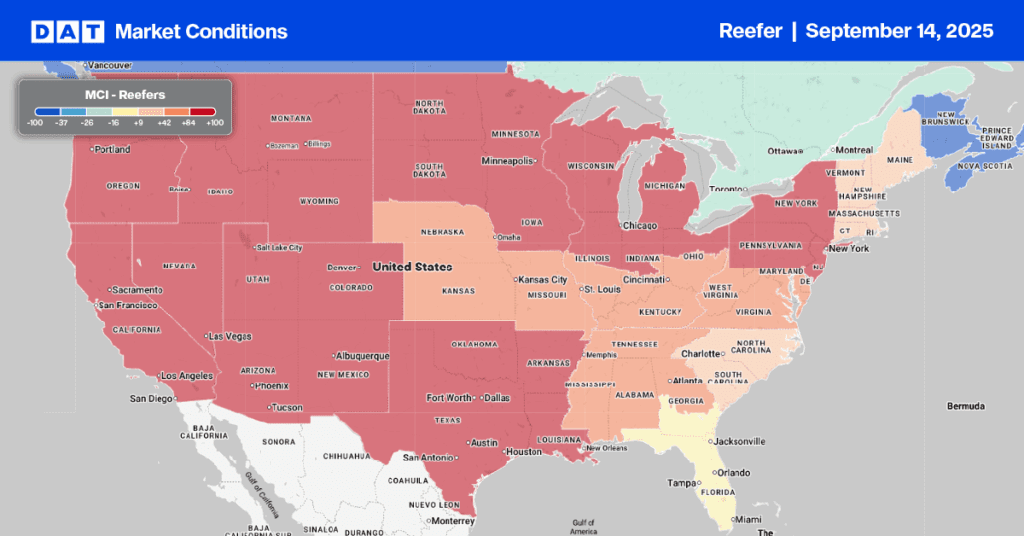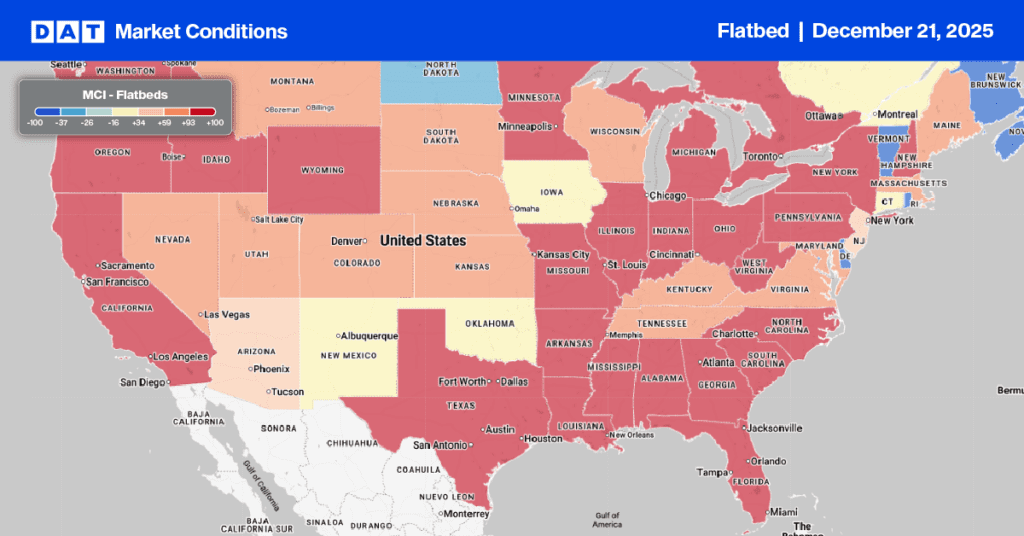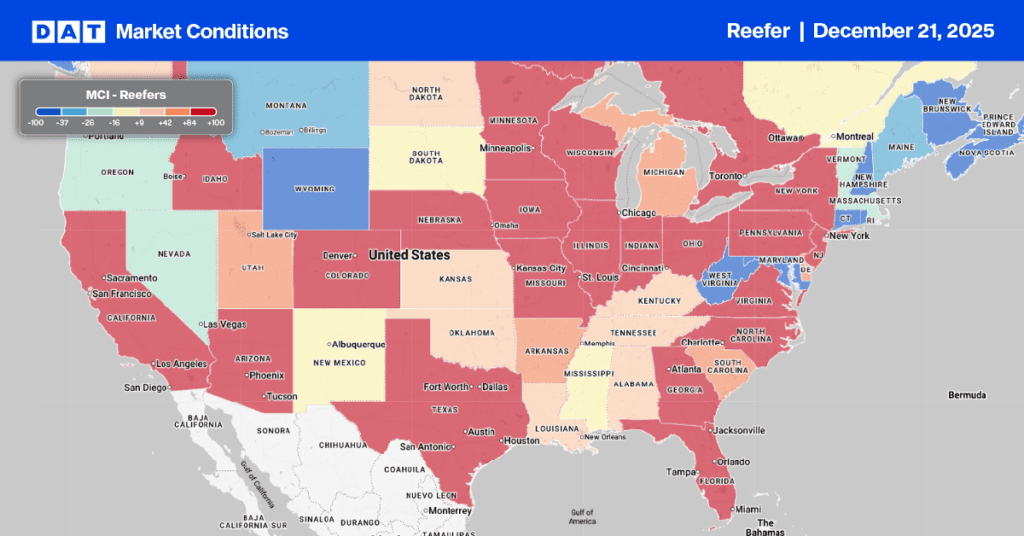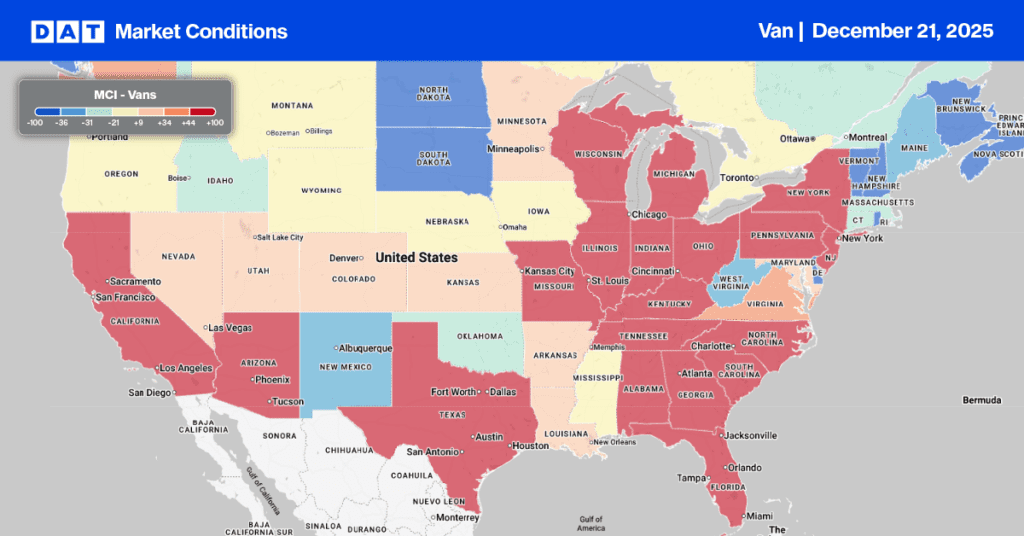New York, a top apple-producing state, offers a diverse selection of apple varieties, both classic and new. The apple season typically runs from late August to late October or early November, with peak activity in the Hudson Valley, Capital Region, and western New York. This is expected to be a strong season for Eastern apples, as favorable spring weather, including rain and cooler temperatures, provided an extended period for pollination and fruit set.
Get the clearest, most accurate view of the truckload marketplace with data from DAT iQ.
Tune into DAT iQ Live, live on YouTube or LinkedIn, 10am ET every Tuesday.
The apple harvest, particularly from August to October, significantly increases demand for refrigerated trucks for outbound shipments. This surge in reefer demand tightens truck capacity in and out of major apple-producing areas like the Hudson Valley and upstate markets, as temperature-controlled transportation is vital for maintaining apple quality. In the Hudson Valley’s Albany market, outbound spot rates are around $0.10/mile higher than last year after increasing by 22% in the last week.

Load-to-Truck Ratio
Last week, national produce volumes rose by 3%, yet spot market reefer load post volumes for all temperature zones saw a 7% week-over-week decline. This, combined with a slight increase in carrier equipment posts, led to the reefer load-to-truck ratio settling at 9.26 for the week.

Spot rates
Despite regional shortages of refrigerated trucks for Halloween pumpkins in southern Illinois and sweet potatoes in Maryland and the eastern shore of Virginia, the national spot rate for reefers saw a $0.03 per mile drop last week. The 7-day rolling average for carriers reached $2.02 per mile, marking a $0.03 increase compared to the previous year.
For produce-specific loads, the USDA reported an average rate of $3.77 per mile, or $4,538 per load, for the week ending September 9, 2025. This compares to $3.64 per mile and $5,025 per load reported twelve months prior.



